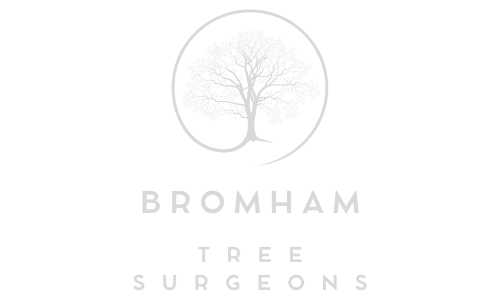Safety First: Pruning for Hazard Reduction and Storm Preparedness
Introduction: In tree care, safety should always be the top priority. Trees are valuable to our properties, providing shade, beauty, and ecological benefits. However, they can also become potential hazards, especially during storms. To ensure the safety of your property and loved ones, it’s crucial to prioritise hazard reduction and storm preparedness through proper pruning. In this blog post, Bromham Tree Surgeons will guide you through the importance of safety-first pruning and how it can safeguard your home and surroundings.
Understanding Hazardous Trees
Before delving into pruning techniques, it’s essential to recognise what makes a tree hazardous. Hazardous trees typically exhibit one or more of the following characteristics:
- Deadwood: Dead or decaying branches can easily break and fall, posing a significant risk to people and property.
- Overgrown branches: Trees with branches that are too close to structures, power lines, or other trees can become entangled or cause damage during storms.
- Weak crotches: Trees with V-shaped crotches are more susceptible to splitting, especially in high winds.
- Imbalanced canopy: A lopsided canopy can make a tree unstable and prone to toppling in strong winds.
- Disease or pest infestations: Infected trees are weaker and may fail during adverse weather conditions.
Safety-First Pruning Techniques
Now that we’ve identified potential hazards let’s explore some safety-first pruning techniques that can reduce the risk of tree-related accidents and storm damage:
- Regular inspections: Schedule routine tree inspections by a certified arborist to identify potential hazards and address them promptly.
- Deadwood removal: Prune dead, dying, or diseased branches to eliminate the risk of them falling during storms.
- Crown thinning: Thinning the canopy of a tree by selectively removing branches can reduce wind resistance and prevent overloading in heavy winds.
- Structural pruning: Reinforce the tree’s structure by removing competing leaders, correcting weak crotches, and reducing imbalances in the canopy.
- Clearance pruning: Ensure adequate clearance around buildings, utility lines, and other structures to prevent damage during storms.
- Elevate the canopy: Raising the lower branches of a tree can minimise the risk of falling limbs and improve visibility and access beneath the tree.
Storm Preparedness
In addition to regular pruning, storm preparedness is equally important in ensuring the safety of your property. Here are some tips for storm preparedness:
- Emergency kit: Keep an emergency kit ready, including flashlights, first aid supplies, and important documents.
- Secure loose objects: Secure outdoor furniture, garden tools, and other loose objects that could become projectiles during a storm.
- Emergency plan: Develop a family emergency plan, including a designated safe area within your home.
- Backup power: Consider installing a backup power source to maintain essential appliances during power outages.
- Stay informed: Monitor weather forecasts and heed evacuation orders if necessary.
Conclusion: Pruning for hazard reduction and storm preparedness should be integral to your tree care regimen. You can minimise the risk of property damage and injury by prioritising safety-first pruning techniques and taking steps to prepare for storms. Remember that tree pruning is a specialised skill, and it’s always best to consult with certified arborists to ensure your trees are in the best possible condition to withstand the forces of nature. With proper care and preparation, you can enjoy the beauty of your trees while keeping your property safe.
Call us on: 01234 860 699
Click here to find out more about Bromham Tree Surgeons
Click here to complete our contact form and see how we can help with your tree’s needs.

